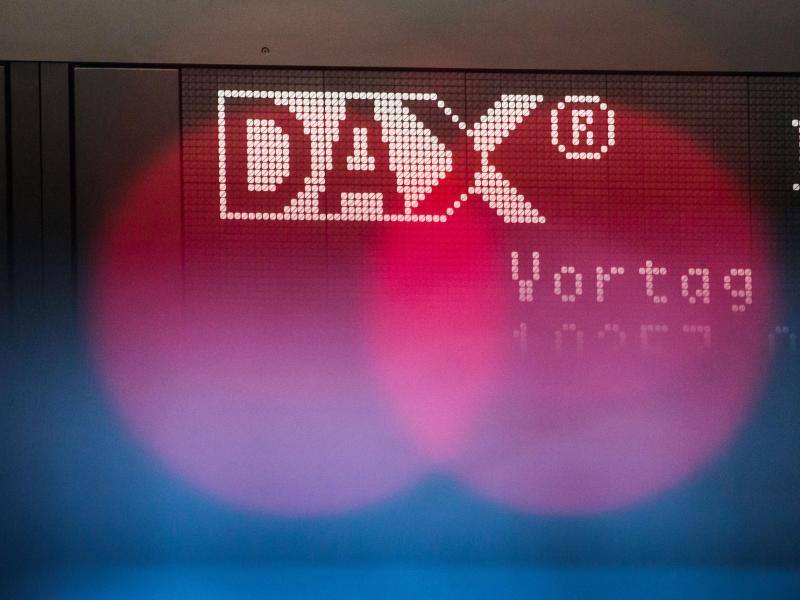

29.08.2022 –The Jackson Hole symposium is over, but the meeting is having an impact: Jerome Powell was unusually outspoken. The head of the Federal Reserve announced “pain” for private households and companies. Inflation must be fought at all costs, he said, or the consequences will be even worse. And yes: interest rates will go up and stay there for a while. Frustration erupted among the bulls.
The Fed spoke, the market reacted: High-tech, interest-rate-sensitive stocks, in particular, went down hard. You can see this very nicely in the four-hour chart of the Nasdaq 100. News from Apple was also not very helpful for the index: According to “Politico”, the probability of an antitrust suit increases. But all indices reacted snuffy to the note bank symposium.

Source: Bernstein Bank GmbH
Powell’s most important statement Friday was this one: “While higher interest rates, slower growth, and softer labor market conditions will bring down inflation, they will also bring some pain to households and businesses. These are the unfortunate costs of reducing inflation. But a failure to restore price stability would mean far greater pain.”
Unexpectedly resolute
In terms of content, the master of money had announced little that was new. The question of whether an interest rate step of 50 or 75 basis points is due in September, Powell made dependent on the data coming in until then – making the labor market report on September 2 and consumer prices on September 13 particularly interesting for traders. However, it was enough that he did not reach out to the doves who had hoped for an easing of the tightening. And unusual was also the way HOW Powell appeared: the speech was not even ten minutes long – scheduled 30. So concisely he had rarely reiterated the determination to a hawkish course. The signal to the financial world: no big words – no talk, but action.
Unusual plain speaking
This caught everyone on the wrong foot who had expected a waxy one-sidedness underpinned by word clouds with signals of easing. The take-home message: interest rates will rise and they will stay up – “for some time.” Economist Michael Pearce of Capital Economics commented, “Powell’s speech was concise by Jackson Hole standards and hawkish throughout…. That appears to be part of a coordinated push from recent Fed speakers against the idea that the Fed is close to pivoting and will quickly turn attention to cutting rates again.” And Zhiwei Ren of Penn Mutual explained, “Powell mentioned his willingness to tolerate a softer labor market and economy to achieve the inflation mandate. He cautioned the risk of ‘prematurely’ loosening. He also said restoring price stability will likely require maintaining a restrictive policy stance for some time. This is him pushing back the market pricing in rate cuts in 2023.”
More government money
However, a small glimmer of hope remains for all the bulls hoping for more money for the market: De facto, two opposing forces are facing each other right now. On the one hand, the Fed. On the other hand, the Democrats are handing out election gifts before the midterms. For example, many tuition fees are to be taken over, which will cost between $300 billion and $600 billion. More is likely to follow in other projects. We keep an eye on the situation for you – and wish you successful trades and investments!
The content of this publication is for general information purposes only. In this context, it is neither an individual investment recommendation or advice nor an offer to purchase or sell securities or other financial products. The content in question and all the information contained therein do not in any way replace individual investor- or investment-oriented advice. No reliable forecast or indication for the future is possible with respect to any presentation or information on the present or past performance of the relevant underlying assets. All information and data presented in this publication are based on reliable sources. However, Bernstein Bank does not guarantee that the information and data contained in this publication is up-to-date, correct and complete. Securities traded on the financial markets are subject to price fluctuations. A contract for difference (CFD) is also a financial instrument with leverage effect. Against this backdrop, CFD trading involves a high risk up to the point of total loss and may not be suitable for all investors. Therefore, make sure that you have fully understood all the correlating risks. If necessary, ask for independent advice. CFDs are complex instruments and are associated with the high risk of losing money quickly because of the leverage effect. 68% of retail investor accounts lose money trading CFD with this provider. You should consider whether you understand how CFD work and whether you can afford to take the high risk of losing your money.7
